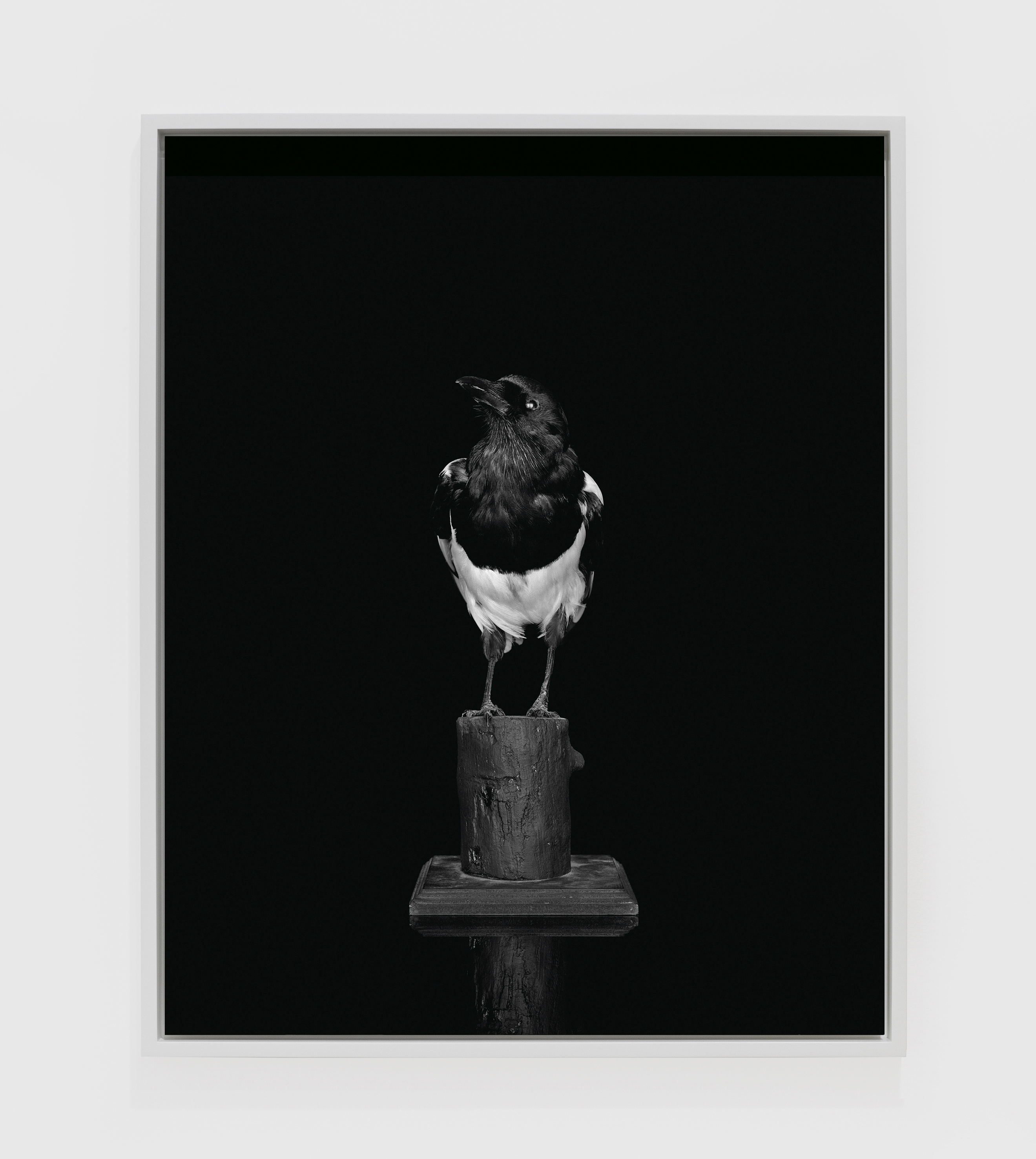


“Mirrors are the doors by which Death comes and goes. You have only to look at yourself in the mirror every day and you will see Death at work there, like bees in a glass hive.” Jean Cocteau
The fairground Hall of Mirrors could be a useful metaphor to describe our experience of the last 18 months, and of course it is tempting to approach any new body of work through the lens of the crisis that has engulfed us. But Sarah Jones’ exhibition at Maureen Paley’s gallery in Bethnal Green sees her pursue her concern with the fundamentals of photography: the encapsulation of time in the captured image, the conversion of the three dimensional to a flat plane, illusion and reproduction. Through reference to Jean Cocteau’s Orphic trilogy of films that began in 1930 with The Blood of a Poet, the artist takes us into dreamlike realms where reality becomes unstable and open to questioning or manipulation.
Magpie (Camera) I and II, are hung side by side, mirror images of each other. The titles seem to speak of the acquisitive, scopic drive of the camera – compulsively capturing images, like the thieving magpie of folklore. The stuffed bird on his perch cocks a beady eye at the viewer, first one way and then the other. It looms out of a depthless black, a messenger from the underworld, a simulacrum of a living creature.
The other bird here, famous for its mimicry, is the Mynah (Mimic) (I). Presented almost 1:1 scale, it sits in profile on a wooden branch, a suggestion of greenery on the base of the stand. Here is nature stilled, first by the taxidermist’s hand, then captured in time and space by the artist. In the bones of the bird is the DNA of dinosaurs.
In the still lifes Screen (Orphée) (II) and Le Sang d’un Poète (for Cocteau) I, time is symbolised in the bubbles of air trapped within a spherical glass paperweight. The apparent simplicity of the composition concentrates the eye on each element: the precise play of reflection in the black base, like polished obsidian; the fact that the glass vase in Screen (Orphée) (II) is inverted, and rendered non-functional; the almost liquid glossiness of the glass surfaces. There is a powerful sense of precision in the whole show, not only in the works themselves, but in the pared-back hang.
Sarah Jones specifies, in the descriptions of her work, those that are printed from black and white negatives. Black is her signature colour, and she uses it in intense studies such as the small-scale works here, or as a background in colour images. The work that confronts you as you first enter the show is Torch Lily (Icarus). I would call these flowers Red Hot Pokers – they normally poke out of the back of borders in the late summer. Here the artist has them writhing across the floor and rearing up like venomous snakes. Like the hubristic Icarus invoked in the title, these most masculine of plants have fallen to earth – artificial light illuminating their succumbing to gravity.
The pair of works Mimosa (Actor) I and II, is magnificent – again, one image the reversal of the other. More than a metre and a half high, the eye scans across each one, tracking the zigzag geometries of the branches. The leaves of the mimosa tree react to being touched by curling up – a form of mimicry in the artist’s mind, and a slightly uncanny characteristic, as if from a fairy tale world where trees can talk.
In Cocteau’s film Orphée from 1950, Orpheus passes through a mirror to travel into the underworld in search of his wife, Euridice. For Cocteau, mirrors were associated with death, or at the very least were portals into another realm, in parallel to the life we know. Death comes and goes in the mirrors we look at ourselves in every day, reflecting the immutable passage of time. Sarah Jones alludes to another figure of classical mythology in the work titled Mirror Ball (Narcissus) II. Unlike the glitter balls that throw showers of light over a dance floor, this one is suspended just above a glassy black surface, self-absorbed, forever reflecting nothing but itself.
Concise, restrained, technically brilliant, this is a show rich with ideas and allusion. Six years on from her last show at the gallery, Sarah Jones quietly produces another master class in the art form.
Caroline Douglas
Director
Maureen Paley, 60 Three Colts Lane, London E2 6GQ. Open Wednesday-Sunday 11.00-18.00. Exhibition continues until 29 August 2021. www.maureenpaley.com